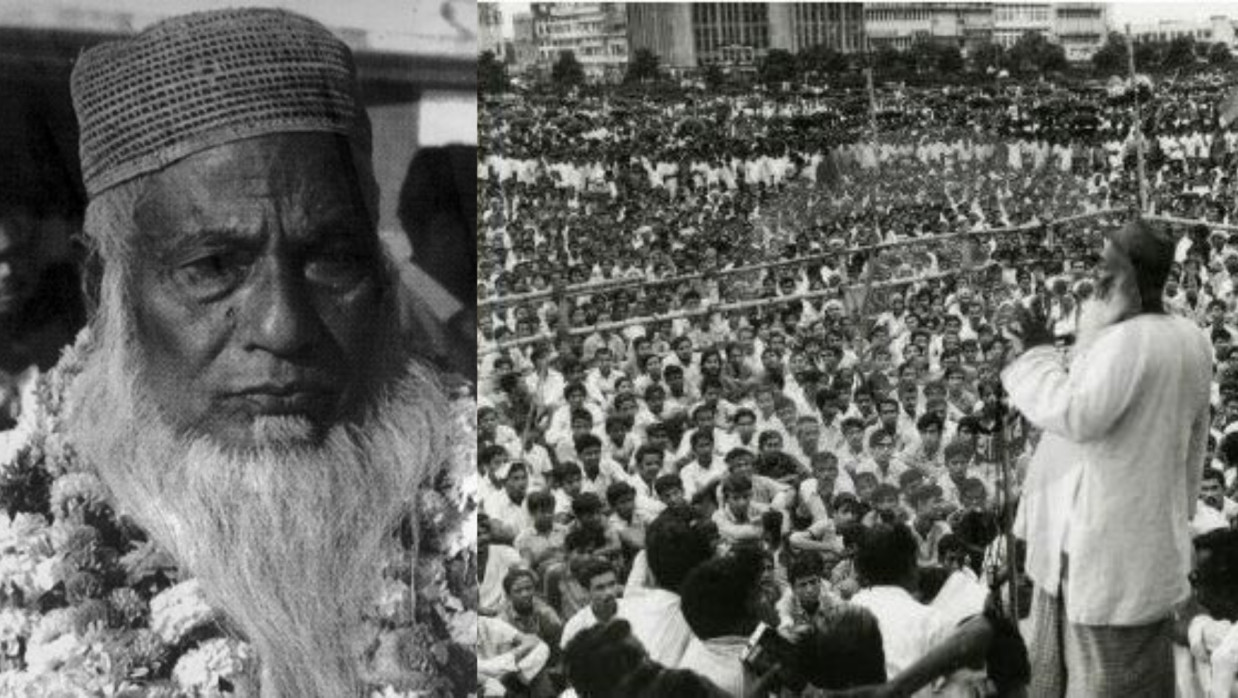
Today marks 49th death anniversary of Maulana Bhasani: 10 interesting facts
- ১৭ নভেম্বর ২০২৫, ১১:০৫

On November 17, 1976, Maulana Abdul Hamid Khan Bhashani breathed his last in Dhaka. Today is his 49th death anniversary. Known as the Majlum Jananeta (Leader of the Oppressed), this politician, spiritual guide, and pioneer of peasant-labor movements remains an indelible name in Bangladesh’s history.
Below are 10 lesser-known but fascinating facts about his life:
- The Mystery of His Birth Date: Bhashani was born on December 12, 1880, in Dhangora village, Sirajganj. Yet he often said, “I don’t know my birth date—I only know I am a child of the poor.” Due to this, some records list 1885 or 1888, but historians accept 1880 as correct.
- How He Earned the Title ‘Bhashani’: In the 1930s, he led a movement in the Bhawal jungles where farmers crossed the Teesta River on bhasan (rafts made of banana trunks) to reclaim occupied land. From then on, he became known as ‘Bhashanir Maulana’, later shortened to ‘Bhashani’.
- From Deoband to Assam Jail: He studied at Darul Uloom Deoband (1907–09). In 1917, he joined the Khilafat Movement in Assam and was jailed for the first time. There, he met Mahatma Gandhi and was deeply influenced by the philosophy of non-violent resistance.
- The Historic ‘Assalamu Alaikum’ at Kagmari: At the Kagmari Conference in Tangail (February 7–8, 1957), Bhashani famously declared:
“Assalamu Alaikum, West Pakistan!” With this, he left the Awami League and formed the National Awami Party (NAP).
- The Farakka Long March at Age 96: On May 16, 1976, at 96 years old, he began the Farakka Long March from Rajshahi toward the Farakka Barrage. He walked over 100 kilometers—this was his final major movement.
- The ‘Third Path’ in the Sino-Soviet Split During the 1960s China-Soviet rift, Bhashani formed NAP (Bhashani) and leaned toward Maoist ideology. He declared:
“I am neither of Moscow nor of Beijing—I am of the oppressed.”
- Boycott of the 1970 Elections: NAP (Bhashani) boycotted the 1970 general elections, arguing:
“Elections under military rule are a betrayal of the people.” This stance helped set the stage for the Liberation War.
- Silent Support During the Liberation War: Due to age, he didn’t fight directly, but from refuge in India, he secretly aided freedom fighters. Upon returning in December 1971, he said:
“My dream of a Golden Bengal has come true.”
- ‘Lal Mia’ – The Red Leader: Among peasants and workers, he was affectionately called ‘Lal Mia’ (Red Leader). Under his leadership, labor movements in Tongi, Narayanganj, and Adamjee Jute Mills flew the red flag as a symbol of resistance.
- His Final Words: On November 17, 1976, at PG Hospital (now BSMMU), in his last moments, he said:
“I have no wealth—only a Quran and the love of the suffering people.” He was buried in Santahar, Bogra, where lakhs gather annually to honor him.
A Final Reflection Maulana Bhashani was a scholar, politician, peasant leader, and revolutionary—all in one. His life proves that religion, politics, and humanity can flow in the same current when the goal is the liberation of the oppressed. Even 49 years later, his “Assalamu Alaikum” echoes in the skies of Bengal.